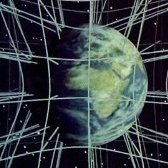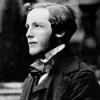Leaderboard
Popular Content
Showing content with the highest reputation on 10/11/20 in all areas
-
The reputation system is a weird blend as a gauge of how much a poster contributes. Every member gets one vote on each post, even staff. You talk down about science quite a bit, so perhaps you've acquired some haters (or misread your audience?). You seem to enjoy an aspect of competition that embraces denigration of a perceived "opponent", which is very common in people who like to "debate" what they think they know. All of this tends to sit poorly with people who just want to discuss science and learn. We have to hope you don't start really trying. It's all about expanding my own ego. The more I know, the more everybody has to listen to me and do what I say and be just like me. Eventually, I'll just kick you all out and write all this stuff myself. My brain is all that's needed to explain everything to everybody. Or... or, discussion with peers is part of a successful methodology, and it needs a place where that's respected with as much rigor as we can apply with volunteers.2 points
-
Quantum entanglement is neither to do with non-locality, nor with action at a distance; it has to do with non-separability of states, and statistical correlation of measurement outcomes. This difference is crucially important. The outcome of each measurement is subject to the usual rules of quantum mechanics, so the entanglement is not apparent to either one of the observers until they compare measurement outcomes - which is of course only possible at or below the speed of light. So no exchange of information at superluminal speeds is possible; and of course it can’t be, since entanglement features in relativistic quantum mechanics.2 points
-
Do you know of any laws that are completely resistant to varying interpretations? Seriously asking because I'd say there are none, but you're welcome to try and change my mind.2 points
-
The are actually saying very strongly what youre pointing out in their own paper right after the 2 proofs on page 11: "4. Examples The above characterisation of process functions allows us to consider specific examples that cannot occur in an ordinary, causally ordered spacetime" is my layman understanding of this correct?: We can very much time travel without the risks of getting into the grandfather paradox with just a small exception - we can’t do it in our universe?2 points
-
That is speculative. And not at all consistent with the accepted definition of a Closed Timelike Curve. https://en.wikipedia.org/wiki/Closed_timelike_curve1 point
-
Black holes are very small in relation to their mass. The whole Milky Way is somewhere between 100-200 thousand light years across. Yet its Schwarzschild radius is about 0.31 light years only. On the contrary, the accelerated expansion is only noticeable beyond the range of billions of light years. So black holes would never overcome expansion. The mass would have to be ridiculously big. You can do the comparison yourself. G=6.674×10−11N⋅m2/kg2 c=3×108 ms-1 1 light year = 3×108 ms-1 × 365×24×3600 s M = (1 billion light years)× c2 /2×G Somewhere around 6 × 1042 kg I think. 1030 Milky Ways... Ridiculous A million million million million million Milky Ways. No way.1 point
-
It's not clear how that is an example of this If you say "And if We desire, We may return them to that state again", I'm going to laugh at you. Not because the statement is religious, but because it is absurd. We simply do not have that ability or anything like it, no matter hat we may "desire". There are statements in various religious works that forecast an end to the universe. With a bit of care, you may be able to "interpret" them so that they coincide with either a Universe ripped apart by dark energy or a "heat death" as the universe expands and cools. So it does not matter much what view I take, Big Crunch; Big Rip or heat death, there will be a religious text that seems to agree with it. It is therefore impossible for me to "take the postulates which run antiparallel with religious teaching" because religious teachings contradict themselves so frequently. As for " it is quite possible that the rending apart of spacetime from our perspective might as well be wrapping them back together to pre-bigbang state. The ugly part is, if I present this possibility (remember, I am not saying it is so, I am saying it may be so) without the reference to the scripture, I get unbiased, neutral analysis of this" there's a problem. We don't know what (if anything) happened before the BB, but we can make predictions- based in science, albeit rather uncertain science- about what the debris from the "Big Rip" would do. And forming another universe isn't a credible outcome, so you say "it is quite possible" that it might happen. Well, not according to physics, it isn't. And thus, when you say " if I announce that I got this idea from a scripture verse, most laymen instantly denounce it as an erratic assumption simply because whatever is in a scripture can "obviously" not be scientifically valid." Well, the layman might say all sorts of things. But the physicists are likely to say that it's wrong, given the laws of physics.; and it doesn't matter where you got the idea.1 point
-
I don't understand the question. To apply scientific principles to develop a solution to a problem that can then be patented surely requires being creative. What does "simply being creative" mean?1 point
-
Your question is ambiguous. I am wondering whether you're talking about instructions of TCP protocol or instruction like command-line or what else? If you want to learn PID you can try: Dump all active processes to a text file before running something, dump it again after running something, compare the differences between text files.. and you will know which processes were created by "something". You can make a script. Dump, compare, display differences, wait 0.1-1s, repeat.1 point
-
Human, and that’s only a crude summary, since there’s detail that “interpretation” doesn’t necessarily cover. Philosophy and religion are also interpretations of the universe, but these are not science.1 point
-
Nonsense, and nonsense clouded by a needlessly verbose and loquacious post. The number of Justices on the SCOTUS is both arbitrary and unconstrained. There could a thousand Justices if that’s what the congress decided. Even if statutes actually bounded the allowed number (which they don’t), it is the Congress who authors those same statutes anyway. Summarized, it can be changed and your point is moot. To be frank, your post also comes across as historically ignorant. In 1789, the SCOTUS had 6 Justices. Then in 1807 there were 7 Justices. Then in 1837 the number bumped up to 9, and in 1863 there were 10 Justices. In 2016, the GOP unilaterally decided to let their be only 8 until further notice... You’re either misunderstanding the facts or you are purposefully lying about them, neither of which bolsters your position. Quite the opposite, really. And yet here we are watching them ram through a 6th GOP Justice who was nominated by an impeached president who lost the popular vote by 3 MILLION votes, one who will be confirmed by GOP senators representing 11 MILLION fewer Americans than their Democratic colleagues — during an already active election in 3 weeks where millions of votes have already been cast and polls show the GOP way down, and when they wouldn’t even interview (let alone vote on) Obama’s nominee within hundreds of days of the election. Let’s not pretend this is about being representative.1 point
-
Thank you for the references. Yes, this (mild) scepticism has been in the air for quite some time. Back in year 2000 you simply could not say you had problems with Copenhagen's interpretation without being classed as a heretic. It was dogma, no doubt due to its astonishing calculational power. Adding to it was Von Neumann's impressive authority on the matter, that went almost unchallenged for decades. It is my posture that the standing uneasiness can be addressed through a concept sketched by John Bell's (one of the first Copenhagen's sceptics) notion of beables. If you wholeheartedly accept the fundamental complex-number mapping of "reality" that QM persistently suggests, you can complex-parametrize these states (the way you usually do in QM) and further assume that part of these quantum-dynamical variables can never be measured --overall phase, gauge arbitrariness, spin projections that are not being measured... What you see in an experiment would just be certain real-number projections of these essentially complex states. IOW, any physical system would package a residual internal entropy that cannot be set to zero by experimental determinations. Again (mathematically) IOW: Quantum states can be set in eigenstates of complex operators that are not Hermitian (those would be the beables, what physical systems "are",) but measuring processes (and their outputs) must be represented by Hermitian operators and their eigenvalues (those would be the observables, what systems "look like" to other systems, which we can call observers.) That would be the reason why pure quantum states cannot be generally purely, unambiguously, "coloured" (in my analogy). They would be chameleonically coloured (in your 1st-reference's parlance.) They always look "coloured" whenever I look at them. But they are only "complex-coloured" internally. Still IOW: they have complex colours; I only see real colours.1 point
-
maybe this responds the question: atoms> compounds > amino acids > nucleotids > proteins > cells > tissues> organs & systems > organism>life1 point
-
Yes it's ambiguous for others who Demystifies Entanglement and Quantum Nonlocality or find A Closer Connection Between Entanglement and Nonlocality But I understood that both have nothing to do. It is true that the correlation was subject to debate namely the transfer comes at the start or after. For the rest it is a nice explanation. Thank you1 point
-
Exactly my usual points about this question. Correlations are there since the very start of the state preparation. So nothing non-local is implied. This is the problem: Suppose elementary particles (say, electrons) are coloured balls. Balls can be found to be in any colour state as referred to a basis R, G, B, and you have devices to measure this "colour." You set both balls to be in an overall state that is white (colourless). So there is perfect anticorrelation; when one of them is found to be at R (total redness) the other one is found to be at GB (total anti-redness). For this you need a specific "redness" detector. But you can not say the ball was red before you measured its level of redness. And the reason is that whenever you measure a different colour component (say, brownness) the particle appears to be either brown or anti-brown (whatever that decomposition is in the RGB basis.) You see our predicament: How did the particle "know" I was going to measure the level of "brownness"? If my particle produced "anti-brown," sure enough, the other one produces "brown." The problem, thus, is not any communication bridge between the particles. The problem is your classical mind: Your classical mind demands the particles to possess an attribute (namely, definite colourness) that is not there. The property that is packaged in the quantum state is a predicate about both particles, which, when referred to your classical mind, can only be expressed as this predicate: "Whatever the colourness of particle (1) is measured, particle (2) will produce the corresponding anti-colourness if the same colourness component is measured." You can write down this property quite simply: J = C_i(1) + C_i(2) = 0 for any possible i-projection in the colour space. But you cannot attribute any particular C_i(1) or C_i(2) separately.1 point
-
Due to the effects of gravity. Remember that in General Relativity, all forms of energy-momentum are sources of gravity, not just mass; so whether the universe contracts, expands, or stagnates just depends on the average energy-density, even if there is no conventional form of mass). Note also that in this scenario there would be no singularity; contraction just turns into expansion below a certain minimum scale.1 point
-
More to the point of OP's topic title "Constitutional laws" and OP's questions. In order for any form of human government to be "constitutional", it must be founded upon a "constitution" that establishes the parameters that such a form of government must be founded within by constitutional boundaries established within its constitution. If such a constitutional form of government be a Constitutional Democracy or a Constitutional Republic, is an experimental a priori (relating to or denoting reasoning or knowledge which proceeds from theoretical deduction rather than from observation or experience) political science expression, based upon pre-existant knowledge of philosophical and scientific constitutional principles regarding forms of governments. Ideally, in the United States constitution, the political scientists "founders" constitutionally intended Supreme Court justices to be unbiased and "apolitcal" (not interested or involved in politics), hence the reasoning for the lifetime tenure for Supreme Court justices that are not directly elected public officials and selected and installed only by the most representative areas in such a government. In the United States constitution, it is not numerated as to how many Supreme Court judges are required to make a constitutional ruling, the court has evolved to the nine members only by statute. Because the number is bound by statute, it would be federally illegal to "stack" the court to higher numbers solely for generating judicial bias for political gain regarding any existent de jure (by Right; according to law) legal precedent. Legal interpretation of legislative acts or laws, is one of the corner stones of any legal or justice system within any form of government. Fundamentally, any law derived by any state or federal level of government really falls within two categories, "constitutional" and "unconstitutional". In the United States, the constitutional validity of a legislative act derived by any state or federal form of government may be challenged by a process called "judicial review" or through a "writ of certiorari". The United States constitution is not "written in stone", it is in fact alterable and amendable, possibly although improbably even abolishable by its own intrinsic constitutional design. The constitution is intrinsically designed to be difficult to alter for any governing body without a representative majority.1 point
-
1 point
-
I haven’t bothered with the details because the basis of the argument is invalid. Once you posit that the moon is made of cheese, I don’t need to delve into the subsequent analysis. It would be a waste of time. Not at all. You can analyze linear actuators with newtonian physics in an inertial frame. It’s ludicrous to suggest otherwise.1 point
-
Laymen are like any student. They are arguably more passionate than most undergrads, in being so self directed. I have a question for you. How many of the individuals you speak to online, have personally self identified themselves to you, as either a layman or an expert in a given field? How are you judging and determining who is who? Really? Without an exception? That doesn't sound like Laymen at all. It sounds like atheists, with zero appreciation for the literary arts and the power of writing. I've met plenty of researchers from Atheistic, Theistic to Agnostic, who had the same lack of appreciation. Let's say you are right, as a little thought experiment. So some Laymen behave in the way you initially described. So do some scientists and other formally educated scholars. What truly frustrates you is that so many students either do not reach or leave the stage of student development, Educational Psychologists would describe as Contextual and committed Relativism. The growth of understanding You might enjoy reading this. Perrys original work is also a good read, but this summarises it nicely enough. How do you know they aren't viewing it personally, as something they acknowledge they don't know, but something potentially worth their time debating as if it is true? I've been in a debate team, sometimes you get given something to argue for, you might not agree with it but it's helpful and educational to take part in. Forces you to step into another's shoes by making it competitive and it is just one of many tools at a teachers disposal to help educate their students. Hell, if we wanted we could agree right now to switch who debates for your claims and who debates for mine. I could take a turn at coming up with arguments as to why all Lay people are uninformed buffoons. I personally think there is nothing wrong with identifying meaningful and pragmatic insights from scripture or literature. Bible, Qur'an, Torah etc. Hell, the reason I politically identify as a contextual centrist is because of the Story of Prophet Joseph. I took deep political meaning from that and I've read every version.1 point
-
1 point
-
We are almost certainly limited this way, but that’s why we build instruments. They can be sensitive to signals that humans aren’t Science is not the search for truth. Science is our attempt to discern how nature behaves, because behavior is what we are able to test.1 point
-
Those were actually sincere suggestions. If you were a little less worried about your own ego and being right, then maybe you'd see them as such. Sounds to me like you just don't know how to respond to my posts so you are making problems where there are none. If we were in a classroom debate, you wouldn't have the luxury of ignoring what I said if you wanted to get a good grade. It's only presumptuous if I'm wrong. You've not given me amy indication that is the case. At the risk of sounding like a math teacher, show me your working please.1 point
-
Yes this confuses many people and is not the only situation in Science where sign conventions differ. Here we have the situation that the original Laws of Thermodynamics were written by folks who worked with steam engines. They put coal or wood into the machine and took mechanical work out. To derive the First Law break the process down into two stages, so there is an intermediate stage. First add the heat put in from the coal, then subtract the work performed by the machine. The machine must have had some internal energy to start with add to this the heat energy from combustion of the fuel and you get the intermediate total internal energy as a sum [math]{U_{{\mathop{\rm int}} ermediate}} = {U_0} + Q[/math] Then we get the machine to perform some work - that is we extract work. This must come from the internal energy, which is now increased to Uintermediate , [math]{U_{final}} = {U_{start}} + Q - W[/math] Which means that we subtract the work [math]\Delta U = {U_{final}} - {U_{start}} = Q - W[/math] Which is the form you will find today in most engineering and many Physics texts. But if you look carefully you will note that the heat added is input and the work extracted or output. When other scientists started to widen thes scope of these laws they wanted to consider all forms of energy, not just heat and work. Furthermore they wanted them all to be additive (that is you could put work in as well as take it out etc) So they adopted the sign convention that all forms of energy are considered positive in themselves, and it is the input or output that carries the sign. So input is positive and output is negative for all forms of energy. This leads to the form of the First Law used by Chemists [math]\Delta U = Q + W[/math] Where Qis the heat added to the system and W is the work done on the system, So if heat is generated by the system or work done by the system they are negative.1 point
-
Look MSC, the Mods created this site. Why do you think they did that? Was it to further the progress of Science. Or was it or another reason. Such as expanding their own ego's?-1 points













